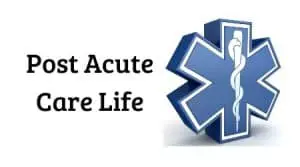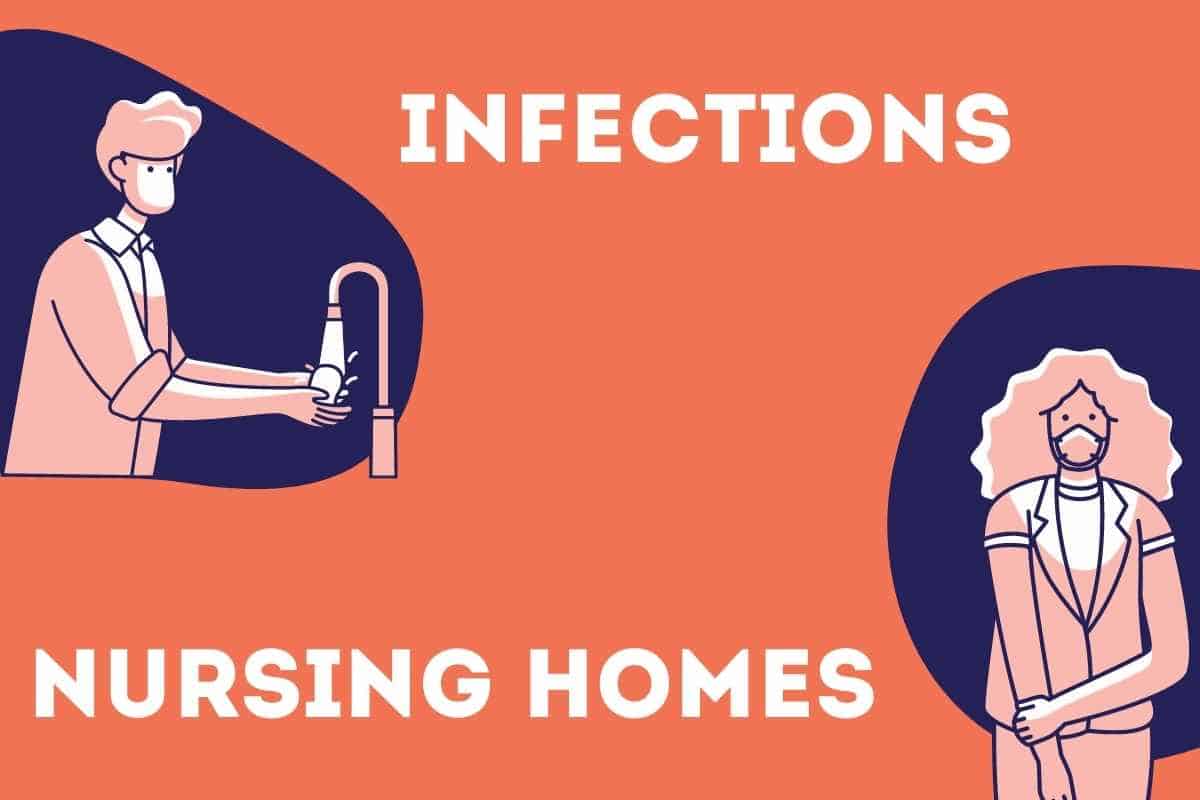Nursing homes aim to provide quality care to older residents. Many nursing homes cannot keep out infections despite offering amenities such as skilled nurses and medication management. Residents frequently visit hospitals, bringing back dangerous pathogens that spread quickly amongst the vulnerable population.
Following proper hygiene protocol, quarantining when necessary, and mandating appropriate health regulations can limit infections. Another key to preventing outbreaks is telemedicine. Diagnosing patients remotely can eliminate the need for hospital visits where residents can get exposed.
There are other things you can do to help avoid infections.
The Spread of Infection
Nursing homes can be prone to infection breakouts when compared to other environments. The nursing home population is more likely to be immunocompromised and is thus more susceptible to contracting and spreading infections, especially if proper infection control measures are not taken.
This population also shares air, food and water, and health amenities in an indoor environment, further encouraging infection spread.
People such as visitors and staff members are continually going in and out of nursing homes pre covid-19 pandemic.
Residents may need to be hospitalized for short periods and can bring pathogens with them upon return. Here are some infections that can be spread in nursing homes.
Respiratory Tract Infections
Respiratory tract infections are the most common infections found in nursing homes. Here are some of the main infections:
- Pneumonia
- Influenza Viruses
- Covid-19
These types of infections are dangerous because they can affect multiple nursing facilities within the same region. For example, in a study conducted in Michigan, influenza outbreaks were uncovered in 17 facilities situated near each other.
Since these types of infections are typically seasonal, the frequency fluctuates based on the time of year. A period of relative calm may be followed by a sudden spike in infection.
Older adults are impacted most severely. The table below illustrates how an influenza virus, the flu, affected people of different age groups in 2017-2018.
| Age Groups | Deaths by Influenza Virus |
| 5-17 | 500+ |
| 18-49 | 2,000+ |
| 50-64 | 6,000+ |
| 65+ | 50,000+ |
Gastrointestinal Tract Infections
After respiratory tract infections, gastrointestinal tract infections (GIs) are the most common type of outbreaks in nursing homes. Here are some of the most common types of GIs:
- Salmonella
- E. Coli
- Rotaviruses
GIs impact the older population most severely. The majority of these illnesses (over 50%) occur in elderly people, and a significant portion of these deaths (over 30%) occur in nursing homes.
Antimicrobial-Resistant Bacteria
Antimicrobial-resistant bacteria are bacteria that have evolved to become resistant to medications meant to kill them. They often spread when patients in acute care facilities are moved to nursing homes.
Once they enter nursing homes, these bacteria have access to a vulnerable population that is less likely to be able to resist them naturally. Since they are immune to medications, they can spread quickly.
The Cause of the Spread
The most common cause of infection outbreaks in nursing homes is people. Here are the ways in which nursing homes get outbreaks:
- Transfer from hospital to nursing home
- Transfer from one nursing home to another
- Visitors and staff members
- Social outings and trips
- New nursing home residents
Infections can also come from other sources. For example, contaminated food or cooking materials could cause an outbreak of gastrointestinal tract infections.
Once an infection enters a nursing home, it becomes difficult to stop. Not only are nursing home residents more susceptible to infections, but living together in an indoor facility promotes the spread of infection.
Avoiding Infections
Not only are some poorly run nursing homes environments for spreading viruses, their populations are more vulnerable and more likely to suffer fatalities from such viruses. Thus, it’s important to take measures to help prevent the spread. A well run home can be a very safe place for patients when proper measures are followed. Here are some recommended methods.
Proper Hygiene
One of the best ways to limit the spread of infection is by maintaining proper hygiene. Here are some of the key ways to do this:
- Wash hands with soap for at least 20 seconds
- Sanitize frequently used possessions such as cell-phones
- Don’t share personal items
- Don’t share food
- Wash towels and bedsheets frequently
- Cover mouth when coughing or sneezing
- Use single-use tissues
- Avoid touching eyes, nose, and mouth
While these steps may seem simple, it can be easy to neglect them or not follow them properly. For instance, washing your hands for only ten seconds instead of twenty may seem fine, but it is not effective in killing pathogens that may be on your hands.
Spreading Awareness
Getting careless and neglecting to follow through on these steps promotes all types of infections and can easily lead to an outbreak. It is important for nursing home residents to follow these steps and for staff members to help implement them. This can be done by:
- Hanging up signs about hand-washing in bathrooms
- Hanging up informative signs throughout the facility
- Providing single-use tissues
- Offering laundry facilities
- Offering toiletries
Wound Care
In long-term care facilities, many residents have open wounds. These may include:
- Pressure ulcers
- Vascular ulcers
- Open areas from dermatitis
- Diabetic wounds
- Wounds from previous injuries
Infections can easily spread from an open wound and lead to outbreaks. Infections may be transferred from the patient to the staff member or the nurse, who then spreads the infection to other residents.
It is especially important for staff members to practice infection prevention. This may involve wearing surgical masks and gloves, washing hands properly, and keeping their distance from immunocompromised residents. The staff member should avoid coming to work when they feel unwell or if they have been around someone sick.
Some residents have smaller open wounds and are thus able to be with the general population. It is important that they take care to manage these wounds properly. For instance, they should not remove any bandages.
Having well-trained nurses and practitioners to manage these wounds can also help with the prevention of infection or resolve them. Knowing which steps to take in the proper care of wounds is easily trained. It just requires the right educator to show staff how to provide care.
Cleaning Practices
Viruses can last on surfaces for several days. If someone touches an infected surface then touches their own face, they can contract an infection which they may then spread to others.
It is important for the staff at nursing homes to properly clean and disinfect all surfaces, preferably with a bleach solution. Here are areas that should be cleaned frequently:
- Doorknobs
- Bathrooms
- Kitchens
- Shared amenities (refrigerators, microwaves, coffee pots)
It is also advisable for residents to keep personal cleaning tools, such as disinfectant wipes and cleaning sprays, in their rooms. These should be used on a weekly basis, but especially if the room is shared or if the resident has guests over.
Food Safety
Preventing the spread of infections like salmonella requires implementing safety regulations in the kitchen. This involves:
- Cooking raw meats and egg yolks thoroughly
- Storing foods at proper temperatures
- Washing produce
- Washing silverware, plates, and glasses
- Wearing hairnets
Moreover, kitchen staff should wash their hands before preparing meals to prevent spreading infections through food.
It is also important that the facility gets its ingredients from a quality source. Following food safety regulations will not be effective if the meats and produce arrive infected.
Medication Management
Many times, the spread of infection can be prevented by proper antibiotics. If a resident is prescribed antibiotics, it is important that they take them exactly as directed. Not following these instructions can render the use of antibiotics ineffective, thus spreading infections.
Staff members can help ensure that residents are taking their antibiotics properly. Many nursing facilities offer skilled nurses that are trained in medication management.
It is important to remember that medication is infallible. For instance, in the case of antimicrobial-resistant bacteria, medication is relatively ineffective against the evolved microbes.
Nursing homes must also practice antibiotic stewardship when it comes to prescribing antibiotics. Overprescribing antibiotics can lead to “superbugs” and infections. Many nursing homes utilize “Mcgeers Criteria” and make recommendations for providers when they identify patients with infections that may not meet the criteria.
Medication is not the only medical way to prevent infection. Staying up to date on vaccinations and mandating that residents are vaccinated before entering the premises can help prevent infection.
Covid 19 vaccination of staff members and residents have resulted in major decline in the number of Covid-19 infections. There has also been a major reduction in the number of influenza infections with the use of masks in the nursing home setting. Whether this continues into the future is to be determined.
Quarantine Procedures
Quarantining can be very effective in preventing the spread of infection. If an infected individual remains inside their room until they are no longer infected, then they can prevent putting other residents at risk.
Being infected is not the only reason why someone may need to quarantine. If a resident begins to experience any of the following, quarantining may be wise:
- Exhibits symptoms of infection
- Was in close contact with an infected resident
- Was in close contact with an infected family member
Quarantining promotes general safety. However, not all nursing facilities are equipped for quarantine situations. Outdated facilities that have multiple beds in one room may not have the resources to promote quarantining. Congested buildings where residents are frequently in contact with one another also makes quarantine difficult.
Visitor Care
Plenty of dangerous pathogens come from external sources. Visitors to nursing homes should take proper care not to spread any infections. While they may not suffer much from an infection, they could easily spread it to someone who will suffer.
Here are some of the things visitors can do:
- Wash hands before entering and when leaving the facility
- Wear a mask if visiting someone with any symptoms
- Avoid visiting the facility if exhibiting symptoms of infection
- Wear a gown and gloves if necessary
It is also important for caregivers to follow these steps. Nurses should never work closely with any infected patients if they are not wearing the proper gear.
Telehealth involves delivering health-care through digital communication. Here are some of the services included by telehealth:
- Medical care
- Patient Education
- Health information services
Telehealth is a broad term that includes a number of health-care related facilities. For specific medical care, the term “telemedicine” is usually used.
Telemedicine is useful for more than just preventing outbreaks. Sometimes, residents may feel too unwell to get up and go to the doctor’s office. On the flip side, if they develop mild symptoms they may decide that the trip is simply not worth it. Easy access to telemedicine ensures that these patients can still receive quality care.
Sources:
https://academic.oup.com/cid/article/36/7/870/318878
https://catalyst.nejm.org/doi/full/10.1056/CAT.18.0268


